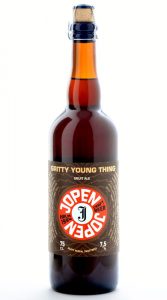 Gruits tend to be understood today as beers that use something other than hops to provide their bittering elements. But that sense of hops as an essential part of beer—alongside water, barley, and yeast, and sometimes a few other things—is a relatively recent one. In The Oxford Companion to Beer’s entry on gruits (written by the reliable Dick Cantwell, and referencing the key text “Sacred and Herbal Healing Beers” by Stephen Harrod Buhner), gruits are described as “a generic term referring to the herb mixtures used to flavor and preserve beer before the general use of hops took hold in the 15th and 16th centuries in Europe.” So, 500 years of hop dominance (ballpark) for a beverage that’s been around since (ballpark) at least 7,000 BCE.
Gruits tend to be understood today as beers that use something other than hops to provide their bittering elements. But that sense of hops as an essential part of beer—alongside water, barley, and yeast, and sometimes a few other things—is a relatively recent one. In The Oxford Companion to Beer’s entry on gruits (written by the reliable Dick Cantwell, and referencing the key text “Sacred and Herbal Healing Beers” by Stephen Harrod Buhner), gruits are described as “a generic term referring to the herb mixtures used to flavor and preserve beer before the general use of hops took hold in the 15th and 16th centuries in Europe.” So, 500 years of hop dominance (ballpark) for a beverage that’s been around since (ballpark) at least 7,000 BCE.
Gruit mixtures varied depending upon what was locally available—but common inclusions were sweet gale/bog myrtle, yarrow, and wild rosemary, while all sorts of other ingredients could be included as well: ginger, caraway, juniper, cinnamon… even some hops. While the socio-economic influences that led to the shift away from these (sometimes psychotropic…) ingredients is way past what I could possibly fit into this column space, it’s pretty fascinating for anyone who’d like an herbaceous deep dive into weird beer history.
Gruits are still pretty uncommon on the whole, with some of my favorites over the past 10 years or so being Upright’s Special Herbs (which hasn’t been made in years) and Moonlight Brewing’s gruit-inspired seasonal Working for Tips (which uses fresh redwood branches instead of hops). A recent SF Chronicle cited the efforts of Moonlight, Woods Beer, and Mad Fritz here in the Bay Area as being a local resurgence of gruit—but a lot of the stuff mentioned is either super limited or been around for a while. Gruits are still pretty far out there in our hop-centic beer world today, but they can also offer a neat peak into our past.


